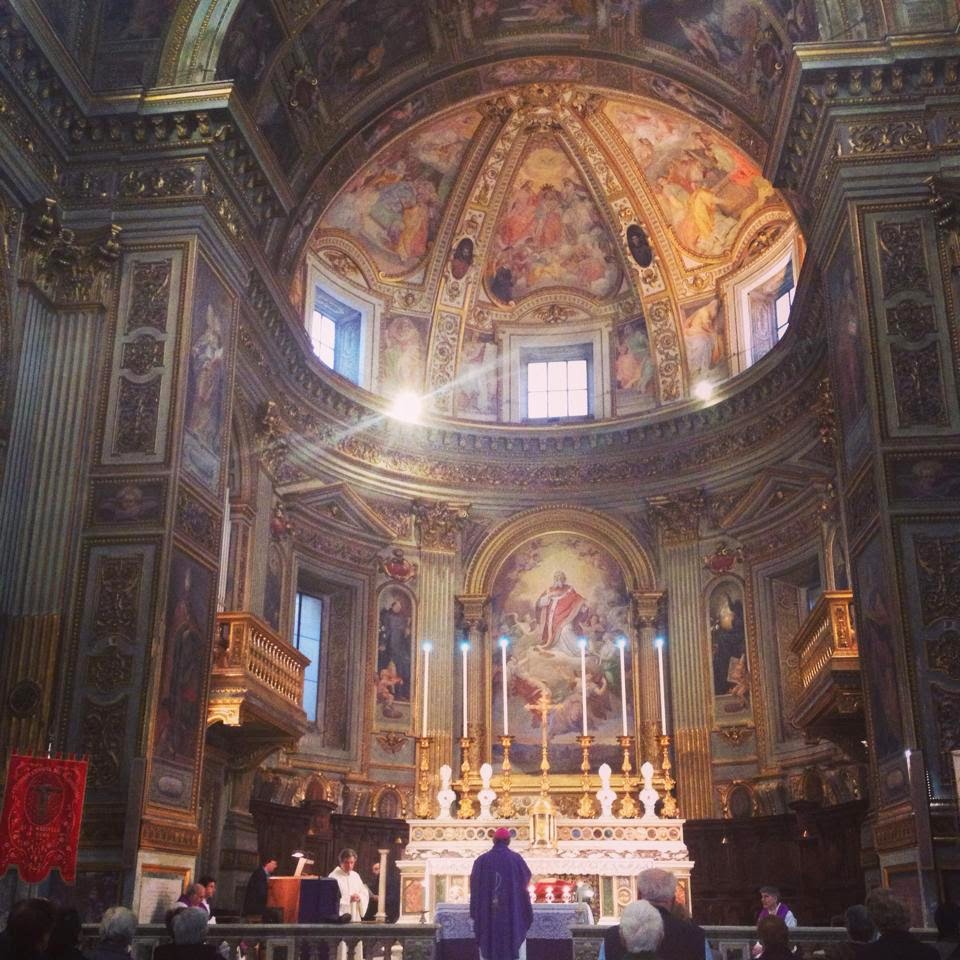Wednesday of Passion Week - San Marcello al Corso
Thursday of Passion Week - Sant’Apollinare
Friday of Passion Week - Santo Stefano Rotondo
![]() |
| This church has the peculiar name of “Round St. Stephen’s” because it was the only round church built in Rome in antiquity. (The Pantheon is also round, and as a church was also known as “Round St. Mary’s”, but was not of course originally built as a church.) The building originally had three rings, but the outermost was removed in a 12th-century restoration. |
![]() |
| In the background on the left is one of a series of 34 frescos which graphically illustrate the deaths of the early martyrs. These were done by the painter Pomarancio for Pope Gregory XIII (1571-85), in whose reign was also published the first post-Tridentine edition of the Martyrology; they have sometimes been called “the Martyrology of Pomarancio.” In the early decades of the Counter-Reformation, these paintings (like the revised Martyrology) were intended to demonstrate that the martyrs in every age bear witness to the same Faith professed in the New Testament by the very first martyr. This, in answer to the claims of the early Protestants, who at that same time were dismantling the devotion which the Church had shown to the martyrs from the very beginning. - In the middle is a side chapel dedicated to Ss Primus and Felician, two brothers martyred at Nomentum in the persecution of Diocletian; their relics were brought to this chapel in the early 7th-century, and still repose in the altar. |
![]()
![]()
Saturday of Passion Week - Saint John at the Latin Gate
![]() |
| The building seen here is not Saint John at the Latin Gate, but a small oratory next to it known as “Saint John in oleo - in the oil.” According to a tradition known to Tertullian, and repeated by St Jerome, St John the Evangelist came to Rome some time after the death of Saints Peter and Paul; under the Emperor Domitian, he was boiled in a pot of oil, but emerged from it not only unscathed, but healthier than he had been. He was then banished to the Greek island of Patmos, where he wrote the Apocalypse; a feast commemorating this attempted martyrdom of the Apostle was on the general Calendar until 1960. The oratory is said to be on the very spot where the pot of oil was set up; it is attributed to Donatello Bramante, the original architect in charge of rebuilding St Peter’s Basilica in the early 16th-century. |
![]()















